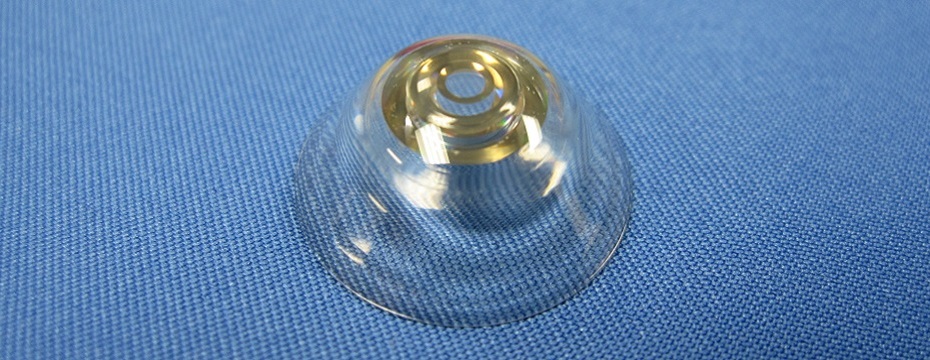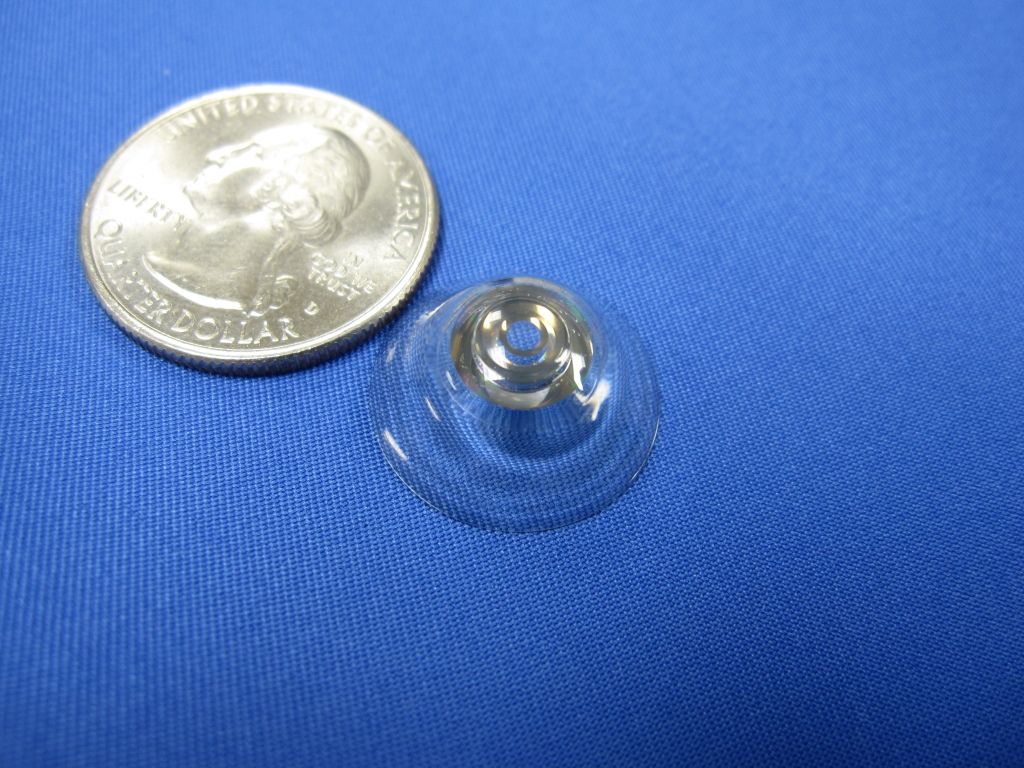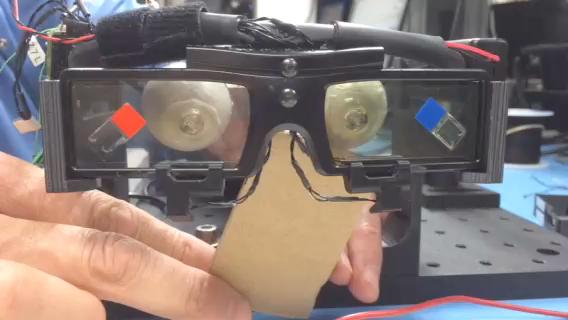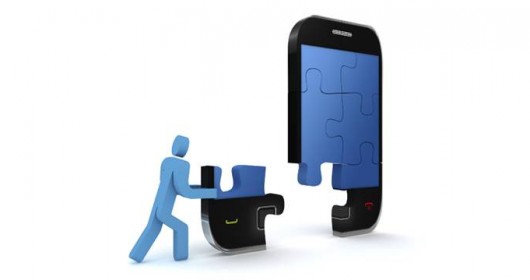Telescopic contact lenses that let the wearer switch between normal and magnified vision.
The latest prototype of new contact lenses could help a lot of people who have visual impairment. The contact lenses were unveiled on February 13, 2015 at the AAAS Annual Meeting in San Jose, California. Team led by Eric Tremblay at the Swiss Federal Institute of Technology in Lausanne developed the contact lenses and he thinks, that they could be very useful for people with macular degeneration. It is debilitating condition in which people gradually lose their central vision.
The contact lens is larger than ordinary lens. It also covers the sclera (whites of the eyes). Within the contact lens are tiny aluminium mirrors, arranged in a ring around the center. When the light passes through, the mirrors bounce it around several times. This causes the objects to appear 2.8 times larger than they really are.
However, if you want to switch between magnified and normal vision, you have to use a pair of electronic glasses. Wink with one eye makes the glasses to switch to a polarized filter that directs light to the mirrors inside. Wink with another eye changes the setting back and light passes through normally.
This prototype continues from the previous model that did not let the user to control the zoom. The older version was also thick in the middle, the airflow was limited (oxygen was not reaching the eye) and the user could wore them for limited time only. This was fixed in the newest prototype by adding small channels to let air travel around underside of the contact lenses. With better airflow, the researchers hope to begin human trials because so far, they were testing it with a life-size mechanical model of the eye.
[sc:ad-text]
Smart contact lenses can be also very beneficial if user wants to keep track of medical problems. At the University of California at Davis, researchers have built lenses with minute pressure sensors to check for glaucoma. Another pair, developed at the University of Washington in Seattle, can check glucose levels, which would be useful for people with diabetes.
The contact lenses has a great potential, but ophthalmologist James Handa at Johns Hopkins School of Medicine in Baltimore thinks that it might be tricky for people who have some form of infirmity to pop the contact lenses on and off with ease.
source: aaas.epfl.ch
[sc:end t=”New Contact Lenses Let You Zoom In And Out On Your Demand”]










Leave a Reply